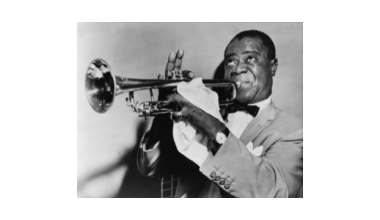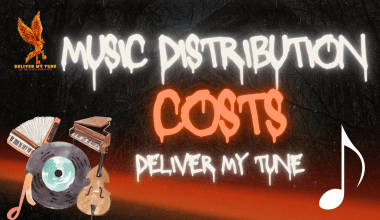Are you ready to embark on your journey as a songwriter but don’t know where to start? Learning how to begin songwriting is an exciting and rewarding process, allowing you to express your emotions, tell stories, and connect with others through music. Whether you’re a complete beginner or someone looking to refine your process, this comprehensive guide will walk you through every step of crafting your first song.
Why Start Songwriting?
Songwriting is one of the most personal and creative forms of expression. But why should you take the leap?
- Express yourself: Put your thoughts, feelings, and stories into words and melodies.
- Connect with others: Share experiences and emotions that resonate with people.
- Develop a skill: Songwriting can be learned and improved over time, regardless of musical background.
When learning how to begin songwriting, remember that every songwriter starts somewhere. The key is to embrace the process and let your creativity flow.
Understanding the Basics of Songwriting
To begin songwriting, you need to understand the core elements of a song:
- Lyrics: The words that tell a story or convey an emotion.
- Melody: The tune that carries your lyrics and makes them memorable.
- Chords: The harmonic foundation that supports your melody.
- Structure: The arrangement of verses, choruses, and bridges.
Mastering these basics will give you the tools to bring your ideas to life.
Finding Inspiration
Before writing your first song, it’s important to find inspiration. Here are some practical ways to ignite your creativity:
- Reflect on emotions: Use your feelings—joy, sadness, love, or anger—as fuel for your song.
- Explore personal experiences: Write about meaningful moments or challenges in your life.
- Look around you: Nature, art, and everyday interactions can inspire unique ideas.
- Listen to other music: Pay attention to lyrics, melodies, and themes in your favorite songs.
Inspiration is everywhere—you just need to keep an open mind.
Choosing a Theme or Topic
Every song has a central theme or topic that gives it direction. When considering how to begin songwriting, start by brainstorming ideas.
Popular Themes in Songwriting
- Love: Relationships, heartbreak, or longing.
- Personal growth: Overcoming challenges or finding strength.
- Celebration: Milestones, joy, or gratitude.
- Social commentary: Addressing societal issues or making a statement.
Write down a list of potential topics, and choose one that resonates with you.
Writing Lyrics
Lyrics are the words that carry your message. When starting with lyrics, focus on simplicity and authenticity.
Steps to Write Your First Lyrics
- Brainstorm ideas: Jot down words, phrases, or sentences related to your theme.
- Find your voice: Write as if you’re having a conversation.
- Create a story: Build a beginning, middle, and end to engage your audience.
- Experiment with rhyme: Rhyming can add flow but don’t force it.
If your theme is about self-discovery, your lyrics might look like this:
Crafting a Melody
A melody is what makes your song memorable. When thinking about how to begin songwriting, creating a melody can be one of the most enjoyable parts.
Tips for Crafting a Melody
- Start with humming: Sing random notes until something sticks.
- Keep it simple: A straightforward melody is easier to build on.
- Use repetition: Repeating phrases makes your song catchy.
- Match your lyrics: Ensure the melody complements the emotion and rhythm of your words.
Don’t overthink it—let your creativity flow naturally.
Adding Chords
Chords are the backbone of your song, providing structure and harmony. If you’re new to instruments, start with basic chord progressions.
Beginner-Friendly Chord Progressions
- C – G – Am – F: Perfect for pop songs.
- G – D – Em – C: Common in ballads.
- A – E – F#m – D: Great for uplifting tracks.
Experiment with different combinations until you find one that complements your melody.
Structuring Your Song
Song structure gives your music a roadmap. The most common structure is:
- Verse: Sets the scene or tells the story.
- Chorus: The emotional and melodic high point.
- Bridge: A contrasting section that adds variety.
Example Song Structure
Verse 1 → Chorus → Verse 2 → Chorus → Bridge → Chorus
This format is easy to follow and keeps listeners engaged.
Refining Your Song
Once you’ve written the basic elements, it’s time to refine:
- Polish the lyrics: Remove any unnecessary words or phrases.
- Adjust the melody: Ensure it flows naturally with the lyrics.
- Practice performance: Singing your song aloud will reveal areas for improvement.
Refining is where your song truly comes to life.
Recording Your Song
Recording allows you to hear your song in its entirety and share it with others. You don’t need a professional studio to get started.
Beginner Recording Tips
- Use basic tools: Software like Audacity or GarageBand is user-friendly.
- Invest in a microphone: A good mic improves sound quality.
- Record in layers: Lay down the melody, chords, and vocals separately.
Once your song is complete, share it with the world! Whether you want to showcase your talent or sell your music on Beatport, there are plenty of platforms to choose from.
- Social media: YouTube, Instagram, or TikTok.
- Streaming platforms: Spotify or Apple Music.
- Online stores: Sell your music on Beatport or Bandcamp.
Conclusion:
Starting your songwriting journey may feel intimidating, but with the right approach, it’s a fun and rewarding experience. By following these steps—finding inspiration, crafting lyrics, creating melodies, and adding chords—you’ll be well on your way to writing songs that reflect your unique voice.
Remember, every great songwriter started as a beginner. So grab a notebook, pick up an instrument, and start creating music today. Your songwriting adventure awaits!
Related Articles:
For further reading, explore these related articles:
- Songwriting Tips for Beginners and Pros: Simple Ways to Write Great Songs
- How to Write Music: Step-by-Step Guide for Songwriting Success
- How to Write Your Own Song – Step-by-Step Beginner’s Guide
For additional resources on music marketing and distribution, visit Deliver My Tune.






